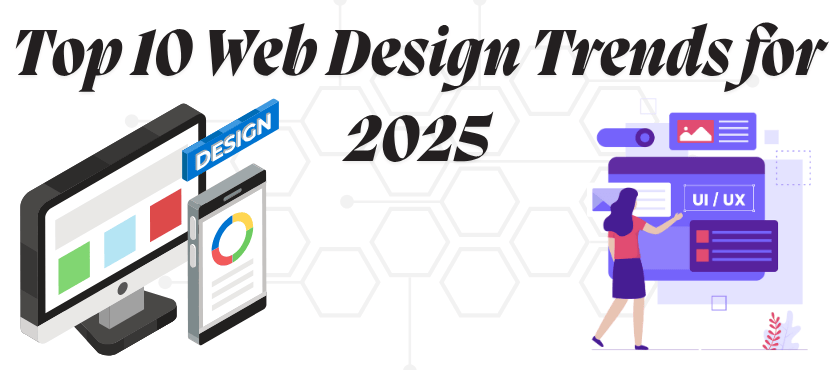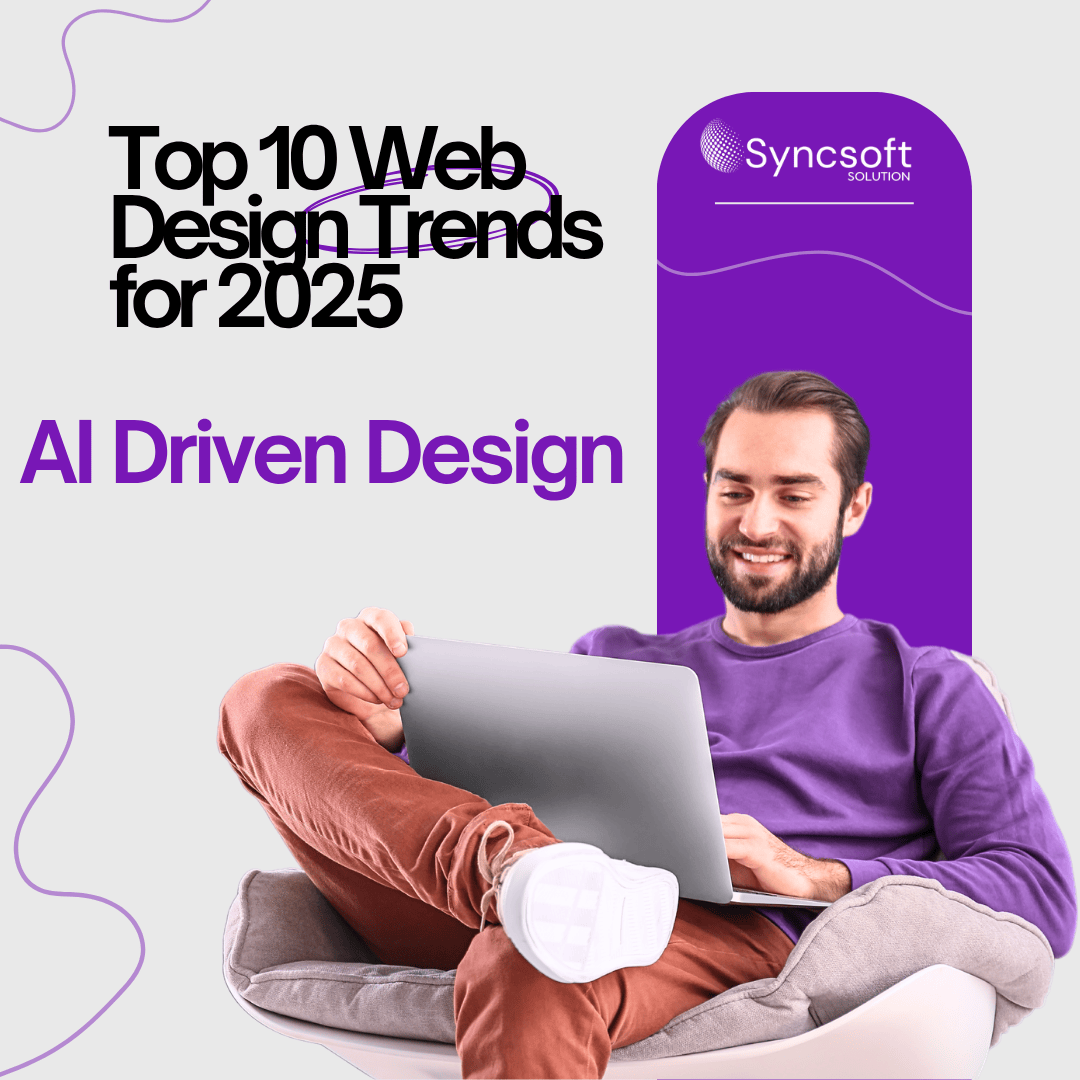Top 10 Web Design Trends for 2025 | As we enter 2025, the world of web design continues to evolve at lightning speed. What was once innovative just a few years ago is now outdated. Businesses need to stay ahead by embracing the latest design trends that not only look stunning but also deliver a seamless user experience. At Sync Soft Solution, we believe in future-forward design thinking that converts visitors into loyal customers.
Here are the top 10 web design trends that will dominate 2025:
Need a modern website that reflects these trends?
- 1. Dark Mode Evolution
- 2. AI-Powered Personalization
- 3. Immersive 3D Visuals
- 4. Voice Search-Optimized Design
- 5. Micro-Interactions and Animations
- 6. Mobile-First Everything
- 7. Accessibility and Inclusivity
- 8. Minimalism with Purpose
- 9. Sustainability-Focused Design
- 10. Custom Cursors and Dynamic Scrolling
- Final Thoughts

1. Dark Mode Evolution
Dark mode has moved from being a niche preference to a mainstream design standard. It’s easier on the eyes, conserves device battery life, and adds a sleek, modern touch. In 2025, expect to see websites offering auto-toggle options based on system preferences and time of day.
Example: Apple, YouTube, and Spotify all offer intuitive dark mode toggles that improve usability.
Tip: Use contrasting accent colors and optimize for readability in dark mode settings.
2. AI-Powered Personalization
AI will drive personalization like never before. Websites will adapt content, product suggestions, and layouts dynamically based on user behavior and preferences in real time.
Example: Amazon uses AI to recommend products, while Netflix tailors its homepage for every user.
Tip: Integrate AI-powered recommendation engines and behavior-tracking tools to boost engagement.
3. Immersive 3D Visuals
3D design elements are becoming more interactive and lightweight thanks to advancements in web technologies like WebGL. They create an immersive experience and hold user attention longer.
Example: Apple’s product showcase pages often use 3D rotating visuals and animations.
Tip: Use sparingly to avoid slowing down the site. Optimize for mobile rendering.
4. Voice Search-Optimized Design
With voice assistants like Alexa and Siri becoming ubiquitous, web design must cater to voice search queries. This means focusing on natural language and mobile-first content.
Tip: Structure content using schema markup, FAQs, and conversational headings.
5. Micro-Interactions and Animations
Micro-interactions (like hover effects, subtle button animations, or loading indicators) enrich the user experience without overwhelming the design. In 2025, expect even more sophisticated animations driven by behavior.
Example: LinkedIn’s reactions and Gmail’s undo-send animation.
Tip: Keep animations fast and purposeful. Don’t use them just for flair.
6. Mobile-First Everything
Over 60% of traffic now comes from mobile. Web design in 2025 means building mobile-first with touch-friendly navigation, faster loading times, and responsive content that feels native.
Example: WhatsApp Web and Instagram are heavily optimized for mobile.
Tip: Use responsive frameworks like Bootstrap or Tailwind CSS. Test on multiple devices.
7. Accessibility and Inclusivity
Web accessibility (A11Y) is now mandatory in many countries. Design trends will focus more on voice navigation, high contrast visuals, alt text, and keyboard-friendly interfaces.
Example: Government and health websites must comply with WCAG standards.
Tip: Use ARIA labels, test color contrast, and add alt descriptions for all visuals.
8. Minimalism with Purpose
Flat and minimal design remains strong, but in 2025, it’s more about purposeful simplicity. Less clutter, more whitespace, and focused user journeys.
Example: Stripe and Dropbox use whitespace and bold fonts to guide attention.
Tip: Prioritize content hierarchy, reduce distractions, and remove non-essential elements.
9. Sustainability-Focused Design
With growing concerns about energy usage and sustainability, websites will be designed to load faster, consume less data, and have a lower carbon footprint.
Example: Low-carbon websites like Branch Magazine use efficient images and lightweight fonts.
Tip: Compress images, use efficient code, and avoid unnecessary scripts.
10. Custom Cursors and Dynamic Scrolling
A growing trend in 2025 is the use of custom cursors and creative scroll interactions that transform the browsing experience into a journey.
Example: Agencies like Active Theory and Bruno Simon’s portfolio site use this to impress visitors.
Tip: Make sure custom features don’t interfere with usability or accessibility.
Final Thoughts
Staying on top of design trends isn’t just about looking modern – it’s about delivering the best experience for your users. Whether it’s integrating AI, optimizing for voice, or adopting 3D visuals, each trend reflects a shift toward more interactive, intelligent, and inclusive web design.
At Sync Soft Solution, we blend design aesthetics with marketing psychology to create websites that don’t just look good – they convert.

